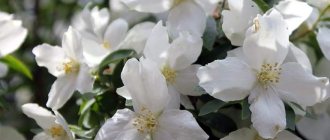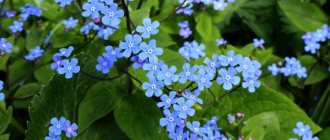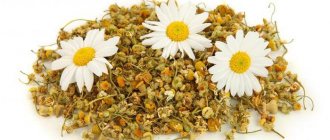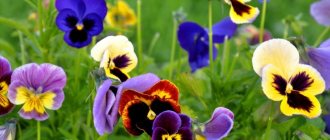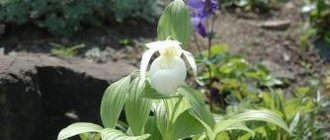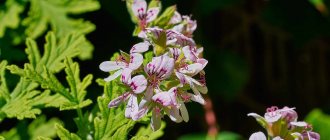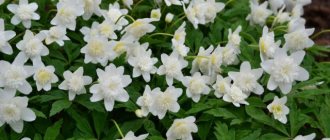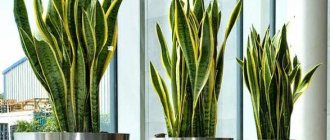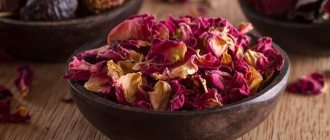Blue cornflower has rightfully earned its status as the king of garden cornflowers. Despite the fact that this plant is an annual, no perennial species can compare with it in the beauty of its flowering, and the shape and structural features of its flower have long become a kind of standard. Pure, rich and surprisingly lovely shades of the blue palette today, thanks to the efforts of breeders around the world, are expanded with white, pink, red and purple colors, but this does not change the character of the plant itself.
Growing annual cornflowers. © (´_ゝ`) Sho
Touching, graceful and very beautiful, blue cornflower is no longer perceived as a weed, despite the fact that its wild counterparts are still found in any field today. But the main advantage of this summer plant and its relatives can rightfully be called its amazingly simple agricultural technology.
Description
Cornflower is an annual or perennial herbaceous plant from the Asteraceae family up to 80 cm in height with single basket-shaped inflorescences on thin stems. A series of tubular petals with a jagged edge are attached to a small basket. Blooms from June until autumn.
The fruits are oblong grayish achenes up to 3 mm in size with a small reddish tuft.
Leaves are pubescent or smooth. Sessile linear ones are located along the stem, and pinnate lobes are located near the ground.
Cornflower easily tolerates drought and is resistant to disease. Loves sandy and loamy soils. Found in rye fields as a weed.
There are 734 species of this plant in the wild. Distributed throughout Europe.
Properties of blue cornflower
The plant has become famous for its high content of cyanidin, pelargonidin, anocyanins, flavonoids, luteolin, kaempferol, astragalin, mineral salts, saponins, bitterness, alkaloids, ascorbic acid and pectin. All of these substances have a significant spectrum of antibacterial and diuretic effects.
Pharmaceutical and cosmetology companies have long included hairweed in the list of popular herbs and use it as a single raw material for the manufacture of medicines, and as part of “compounded” teas.
The main raw materials for harvesting are flowers and the peduncle of the plant. During harvesting - cornflower flowersCornflower is a magnificent representative of the Asteraceae family, which can become... cut, dried, and only then used for its intended purpose.
Medicinal raw materials, if properly dried, can be stored for up to six months in a dry, dark place.
Voloshka, a strong diuretic, is therefore primarily used for the treatment of genitourinary diseases. During research, it was found that medications based on cornflowerCornflower is an excellent representative of the Asteraceae family, which can become i... blue, relieve spasms, have a diuretic effect, reduce the concentration of uric acid in the body, have an antibacterial and choleretic effect, normalize kidney function and relieve inflammation, and due to the high content of bitterness in the raw material, the functioning of the gastrointestinal tract is normalized.
Cornflower Cornflower is a magnificent representative of the Asteraceae family, which can become an ideal... blue is not only a beautiful plant that can add brightness and airiness to your area, but also an excellent medicine for many ailments.
Reproduction methods and varieties
Annual and perennial cornflowers are bred in different ways: the former are planted only with seeds, while the latter are sown and grown by dividing the bush. To achieve earlier flowering, both are sown as seedlings.
Summer residents prefer perennial species that can grow in one place for up to 10 years.
Cornflower has been cultivated as a garden flower since the mid-16th century.
Plants are planted in flower beds, used in mixborders, alpine slides, and used as borders.
| Annuals | |
| Wild view | Variety |
| Cornflower blue, field or blue. (Centaurea cyanus) | f. alba plena hort. f. plena azurea f. plena rosea f. plena carminea |
| Black Ball | |
| Blue Diadem | |
| Florence Pink | |
| Musk cornflower (Centaurea moschata) or musk amberboa (Amberboa moschata) | Bride |
| Morgan |
| Perennial | |
| Wild view | Variety |
| Fisher's cornflower (Centaurea fischeri) | No cultivated varieties |
| Russian cornflower (Centaurea ruthenica). | No cultivated varieties |
| White cornflower (Centaurea dealbata or Psephellus dealbatus) | John Courts |
| Soft cornflower (Centaurea mollis) | No cultivated varieties |
| Large-headed cornflower (Centaurea macrocephala) or large-headed cornflower (Grossgeimia macrocephala). | No cultivated varieties |
| Mountain cornflower (Centaurea montana). | Parham |
| Grandiflora | |
| Alba | |
| Rosea | |
| Violetta |
Care
The main advantage of garden cornflowers is their unpretentiousness. They are unpretentious to both weather conditions and soil composition. Necessary plant care comes down to watering, timely weeding, and loosening the soil around the flower. Withered flowers are removed, thereby maintaining the well-groomed appearance of the plantings. Cornflower intended for cutting requires fertilizer twice a month. In winter, plants do not need shelter.
Watering
photo: © AMANDA
Watering cornflowers should be moderate. This crop tolerates dry periods better than waterlogging. All types of cornflowers tolerate drought well, but blue cornflowers are the most drought-resistant.
Top dressing
| nitrate form (sodium and calcium nitrate) | Nitrogen is contained in the form of an acid, easily soluble in water. Nitrate is applied to the soil in autumn or early spring, in small doses (an overdose contributes to the accumulation of nitrates harmful to human health in fruits) and is used in fertilizing. Nitrate is recommended for acidic soils and plants with a short growing season (radish, dill, parsley, early cabbage, lettuce) |
| ammonium form (ammonium sulfate) | “free floating” contains ammonium ions. Ammonium sulfate is added to the soil in the fall, since it dissolves rather poorly in the soil, which should be deoxidized (ammonium sulfate is a physiologically acidic fertilizer). To do this, add 1.3 kg of lime per 1 kg of fertilizer. Onions, tomatoes and cucumbers, late cabbage and other plants with a long growing season are partial to ammonium sulfate |
| amide form (urea) | the most concentrated nitrogen fertilizer, which is converted in the soil into ammonium carbonate, necessary for obtaining a bountiful harvest. It is applied under trees and shrubs - either directly into the soil when loosening, or in the form of an aqueous solution when watering. Urea is also a physiologically acidic fertilizer, which means that the soil needs to be deoxidized (add 2 kg of lime to 1 kg of urea) |
| ammonium nitrate form (ammonium nitrate) | physiologically acidic fertilizer, one part of which is easily dissolved in water and moves freely in the soil, and the other part has a slow action. Ammonium nitrate is used to feed potatoes, beets, and grain crops. Particularly effective in combination with phosphorus and potassium |
Twice a month it is recommended to feed flowers with complex mineral fertilizers. This activates abundant flowering and growth of green mass. To improve the wintering conditions of plants, autumn fertilizing is allowed. It will help flowers endure harsh winter conditions and temperature changes in early spring, and will also ensure rapid growth and lush flowering in summer.
Planting seeds in open ground
Perennial and annual cornflowers are sown immediately in the flowerbed. In order to get healthy shoots, you need to choose and prepare the place correctly, and decide on the time of sowing.
Site selection and soil preparation
For planting, choose a place that is lit all day. When sowing cornflowers in a flowerbed next to other flowers, they carefully think through the overall composition: take into account the height of all the plants, their bushiness and the density of the stems. The fact is that cornflowers love sunlight and space, and in the shade they cannot achieve abundant flowering.
They prefer light loams, so in the fall lime, chalk (300 g per m2), dolomite flour or ash are added to the acidic soil. To keep the soil loose, add a bucket of sand or sawdust per 1 m².
Before sowing, the soil is dug up onto the spade and fertilizing is applied: 2 kg of peat and humus, 100 g of wood ash and 1 tbsp. l. nitrophoska per square meter.
Sowing time
Cornflowers can be planted with seeds before winter or in spring.
In the middle zone, winter sowing is carried out in October–early November, and in the southern regions – in November–early December at temperatures close to zero. In warm weather, the seeds will germinate and the seedlings will die. Gardeners know that sowing before winter allows for earlier flowering.
In the spring, cornflowers are planted in well-warmed soil: in areas with mild winters in early April, in places with more severe climatic conditions in mid-May.
If you want annual cornflowers to bloom continuously throughout the season, in the spring several more plantings are carried out at equal intervals.
Note: Perennial plants planted with seeds will produce flowers only after a year.
Landing instructions
Usually the seeds do not need additional processing, but for Fischer's cornflower and field cornflower, dry stratification is necessary. Without this procedure, the seeds will not sprout.
They are placed in plastic bags and placed on the top shelf of the refrigerator at a temperature of +1 to +5 ° C for 1–2 months before sowing in open ground or for seedlings. When planting before winter, stratification is not required.
In April–May, beds are formed on the site. The dug up soil is leveled, pressed down a little and furrows 2–3 cm deep are made.
The soil is moistened abundantly and dry or prepared seeds are planted at a distance of 5–10 cm. They are sprinkled with sifted soil on top. After this, the area is covered with a special cloth. The beds are watered every 2 days.
The first shoots appear within a week, after which the covering material is removed.
After a few days, the sprouts are thinned out, leaving 10–20 cm between them. You need to ensure that adult bushes grow freely, without interfering with each other.
Top dressing
Cornflowers are fed before flowering. To do this, take 10 liters of water and dissolve 1 tbsp in it. l. nitrophoska and urea. Water the soil under the plants with the prepared fertilizer, using 3–4 liters of the product per m². We must remember that excessive feeding leads to yellowing of the leaves.
To make the buds bloom faster, use the drug “Zircon”. In accordance with the instructions, the bush is sprayed with it before flowering.
Watering
The plants are unpretentious and need water only in severe drought.
If the leaves of the cornflower begin to fade and the flowers become smaller, this means that it does not have enough moisture. It is best to install an automatic sprinkler on the site, which can be turned on daily for a few minutes.
In rainy summers, the bushes are not watered, because for them, waterlogging is more dangerous than lack of moisture.
Trimming
To make the plants look beautiful and aesthetically pleasing, faded shoots are removed during the summer. Pruning is carried out in two ways: high and low.
In the first case, the dried inflorescences are removed, and in the second, the stem is removed 10 cm from the ground. Summer residents recommend top pruning to make the bush look fluffier and neater. Low results in the appearance of bald spots in the flowerbed.
Kinds
The genus of cornflowers has several hundred species, differing in structure, lifespan (perennial, biennial or annual), and color range. In addition to the traditional blue or purple flowers, there are pink, crimson, burgundy, orange, blue, yellow, and white. The height of the plants also differs: from 25 cm (short varieties) to 120 cm (tall varieties). Perennial garden varieties have a distinctive feature - their basal leaves grow in 2 stages. In the spring, young leaves appear, which remain on the branch until the end of August, and then dry out. And in the fall, new leaves grow and last until next spring.
photo :© naturescape.co.uk
Thus, perennial varieties have green basal leaves all year round. The leaves of all types of crops are beautiful, feathery, often pubescent, which is why they appear silvered. Among the perennials, the most notable are the following:
Large-headed. Tall species - from 100 cm. Baskets of inflorescences with a diameter of 7 cm have a yellow or light yellow color. Large-headed cornflower is propagated by a piece of rhizome. Mountain. It has an average height of up to 60 cm; its powerful rhizome requires a large area of soil. June-August is the time of abundant blooming of blue flowers. Flower baskets reach a diameter of 6 cm. This cornflower reproduces by dividing the rhizome.
photo: © Byron Varvarigos
Lugovoy. Stem height up to 80 centimeters. Two types of leaves (lanceolate and ovate) are located on two levels. Flowers can be of various shades - from pink to purple.
photo: © Vanessa Lee Thomas
Whitened. It has a straight stem up to 60 cm tall. Rich pink flowers appear from June to late August. Even after flowering, the plant looks beautiful due to the lush greenery of the correct spherical shape. Propagated by dividing the rhizome. Pink. The straight, stable stem reaches a meter in height. Inflorescences are small, solitary. Flowering time is June-July.
photo: © RoundRockGarden
Growing seedlings
In April, annuals and perennials are sown for seedlings.
To do this, prepared containers are filled with soil for flowers, moistened, seeds are planted to a depth of 1–2 cm and covered with film. The container is installed at a temperature of +20–22.
Thanks to this shelter, a greenhouse effect is created, and heat and high humidity promote rapid germination. After germination, the film is removed and the container is placed in a well-lit place.
The sprouts are fed once with complex fertilizers for seedlings. When they reach 10 cm, they are transplanted into open ground to a permanent place at a distance of 30–40 cm from each other.
Annuals grown in this way open their buds 3 weeks earlier, and perennial bushes take root well by autumn and bloom the next season.
Seed selection
Towards the end of the season, the flowers begin to form a seed pod. To get high-quality seeds, you need to wait until the seed pod on the stem dries, then cut it off. Seeds can be stored as part of the box, or you can empty them. Collected seeds retain their properties for 3 years, after which the likelihood of high-quality seedlings decreasing.
photo: © gardenteacakesandme.co.uk
When choosing seeds, you should pay attention to the manufacturer. According to professional gardeners, high-quality garden cornflowers can be obtained from seeds from Novgorod or Novosibirsk breeders.
Growing by dividing rhizomes
Perennial garden cornflower is propagated by dividing the bush in late August–early September after it has finished flowering. The plant is dug up, shaken off the soil, the roots are washed under water, and then divided into parts.
Each must have at least 3 formed buds. The cuttings are immediately planted in the prepared place and the ground shoots are cut off, leaving 10 cm above the soil level. To ensure that the plant takes root well, it is watered 3-4 times a week for a month. The cornflower will bloom next summer.
Recommendation for working with the lunar calendar
It is not always possible to synchronize work on a site with the recommendations of the Sowing Calendar, and there is nothing to worry about. Everything will grow, we won’t be left without a harvest. When gardening, it is important to consider other factors: weather, climate of the region, personal health. Lunar is just a help, a lifesaver. The main thing is to try not to carry out important work on unfavorable days, and this, as a rule, is:
- New Moon and Full Moon, when it is better not to disturb any plants.
- The moon is in the sign of Aquarius when there is a high probability of getting gnarled plants.
Influence of the lunar phase:
- In the “Waxing Moon” phase, “tops” are planted - plants with fruits that are located above the surface of the earth. Plus, this is a good time for weeding, loosening, picking seedlings, grafting trees and applying fertilizers.
- In the “Waning Moon” phase, “roots” are planted - everything that bears fruit underground. In determining the dates when it is better to plant and sow, prune and pick, feed and graft, it is also worth taking into account the position of the Moon in the Zodiac sign (fertile, infertile, infertile).
Diseases and pests
Cornflowers are resistant to most diseases, but they can be affected by mites or fungi.
Sometimes plants become infected with fusarium. The leaves of the flower turn yellow and fall off after a while. To prevent the spread of the disease, the damaged parts are removed and the stem is treated with fungicidal preparations.
When bushes are infested by spider mites, the leaves turn yellow and spots appear on them. To destroy the pest, the plant is sprayed with insecticides. Damaged parts are removed.
Important! Bushes that are over-watered are more likely to get sick. Overwatering weakens cornflowers and they become vulnerable. It is necessary to control soil moisture and, if necessary, plant plants on a high bed or arrange drainage.
Chemical composition
The constituent parts of cornflowers may differ, since different varieties may contain different substances that impart one or another characteristic of the crop. However, the following substances were found in the flowers and foliage of cornflowers of all types:
- glycosides;
- cyanine and cytaurine;
- pelargonin chloride;
- tanning compounds;
- alkaloids;
- fixed oils;
- potassium, calcium, manganese, iron;
- magnesium, copper, zinc, chromium.
In addition, traces of protein compounds and saponins, as well as mineral salts, were found in the flowers. This set of substances determines the use of the plant not only in a decorative environment, but also as a medicinal raw material.
You may be interested in: Tamarix
